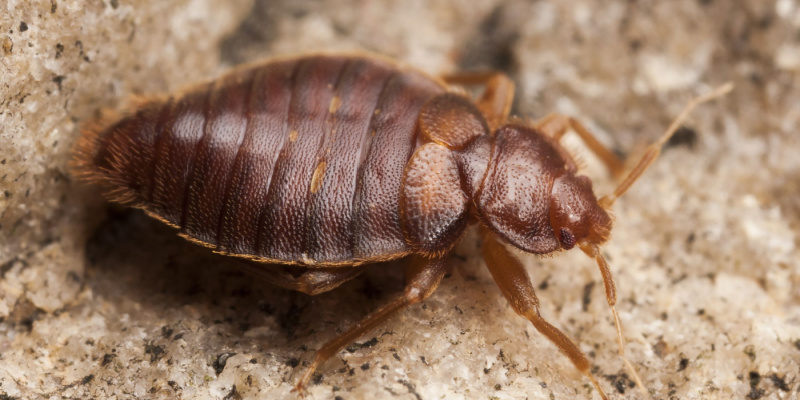Economical Bed Bug Exterminator Near Me: DC Heat Treatment Specialists
Economical Bed Bug Exterminator Near Me: DC Heat Treatment Specialists
Blog Article
Discovering the Science Behind Bed Pest Warm Treatments as a Lasting Insect Monitoring Technique
In the world of pest monitoring, the pursuit for sustainable and reliable solutions continues to be a constant quest. One such approach that has actually gained traction in current years is the use of warm therapies to combat bed insect infestations. By harnessing the science behind thermal fatality factors for these persistent insects, warmth therapies provide an encouraging alternative to traditional chemical-based techniques. The intricacies of how warm successfully eliminates bed pests and the wider effects for lasting pest management methods make this a subject worth discovering better.
Bed Bug Warm Treatment Process

Thermal Fatality Point for Bed Insects
Exposing bed insects to raised temperatures beyond their thermal resistance array is vital for achieving efficient eradication in warm therapy processes. The thermal death factor for bed bugs refers to the temperature level at which these pests can not make it through. Study indicates that bed insects start to die when revealed to temperatures over 113 ° F(45 ° C) for a continual duration. As the temperature boosts, so does the death rate of bed insects. At around 118 ° F(48 ° C ), bed pests begin to die quickly, with a death price of nearly 99% within minutes of exposure. This shows the sensitivity of bed pests to heats and highlights the efficiency of warm therapies in eliminating invasions. By getting to and keeping temperature levels above the thermal fatality factor for bed bugs, insect monitoring specialists can ensure extensive elimination of bed insect populations, consisting of hard-to-reach locations where chemical therapies might be much less reliable. Recognizing the thermal fatality point for bed bugs is necessary for applying effective warmth therapy approaches and attaining lasting pest administration results.
Advantages of Heat Treatments
Having actually established the important thermal fatality factor for bed pests, it is necessary to now explore the substantial benefits that warm treatments provide in effectively removing these resistant bugs. Heat therapies present a number of essential benefits when contrasted to typical chemical approaches. One of the key benefits is that warmth can penetrate deep into cracks and holes where bed pests conceal, making sure that also one of the most hard-to-reach areas are warmed to dangerous temperatures. This detailed technique not only kills live insects but likewise targets bed insect eggs, avoiding future problems.
Additionally, heat treatments are safe and eco pleasant, making them a lasting parasite monitoring method. Unlike chemical pesticides, warm treatments do not leave hazardous residues that can pose dangers to human wellness or the setting. This facet is specifically important in delicate atmospheres such as hospitals, colleges, and domestic areas where chemical use may not be preferable.
Additionally, warm treatments have a high success price in removing bed bug infestations in a solitary treatment, lowering the requirement for numerous check outs and minimizing disturbance to residents. This performance not just saves money and time yet additionally offers comfort to those dealing with bed insect issues.
Efficiency of Warmth Treatment

Research research studies have actually consistently shown the efficiency of warmth treatments in accomplishing a high price of bed insect mortality. Properly performed heat therapies can reach all the cracks and crevices where bed pests might be harboring, making certain a thorough technique to extermination. Moreover, heat treatments have actually the included benefit of eliminating bed bug eggs, which are usually immune to typical chemical treatments. In general, the effectiveness of heat treatments in getting rid of bed insect invasions makes them a trustworthy and sustainable pest management method.
Sustainable Bug Monitoring Benefits
Implementing sustainable bug management techniques provides long-term advantages for both the environment and public health. By using approaches such as warm therapies for pest control, we can lower the reliance on unsafe chemical pesticides that can have adverse impacts on environments and human health - bed bug treatment. Sustainable parasite management techniques help in preserving biodiversity by targeting particular bugs without damaging non-target organisms, consequently keeping a balanced environment
Furthermore, lasting insect monitoring practices add to the total health and wellness and health of the public. By lessening direct exposure to hazardous chemicals used in conventional bug control approaches, heat therapies give a much safer choice for pest management in residential, industrial, and public rooms. This decrease in chemical usage also helps in protecting against chemical residues from infecting soil, air, and water, protecting environmental top quality.
Verdict
To conclude, bed bug warmth treatments have been shown to be a lasting and reliable pest management approach. The thermal fatality factor for bed insects makes them prone to heat therapies, which have many advantages over standard chemical treatments. The efficiency of warm treatments in getting rid of bed insect infestations while decreasing environmental influence highlights the possibility of this approach as a sustainable solution for pest control.
The bed insect warmth therapy procedure involves raising the temperature level within plagued locations to a degree that efficiently eliminates bed bugs and their eggs. By getting to and preserving temperature levels above the thermal fatality factor for bed pests, pest management professionals can ensure extensive removal of bed pest populaces, including hard-to-reach areas where chemical therapies may be less efficient. One of the main benefits is that warm can permeate deep into cracks and crevices where bed pests hide, making sure that also the most hard-to-reach locations are warmed to dangerous temperature levels. Unlike chemical treatments that might leave behind immune populations, heat treatments provide a ecologically pleasant and non-toxic solution that can pass through deep into exterminator near me furnishings, walls, and other hard-to-reach areas where bed bugs conceal.
The thermal fatality point for bed pests makes them at risk to heat therapies, which have many benefits over standard chemical treatments.
Report this page